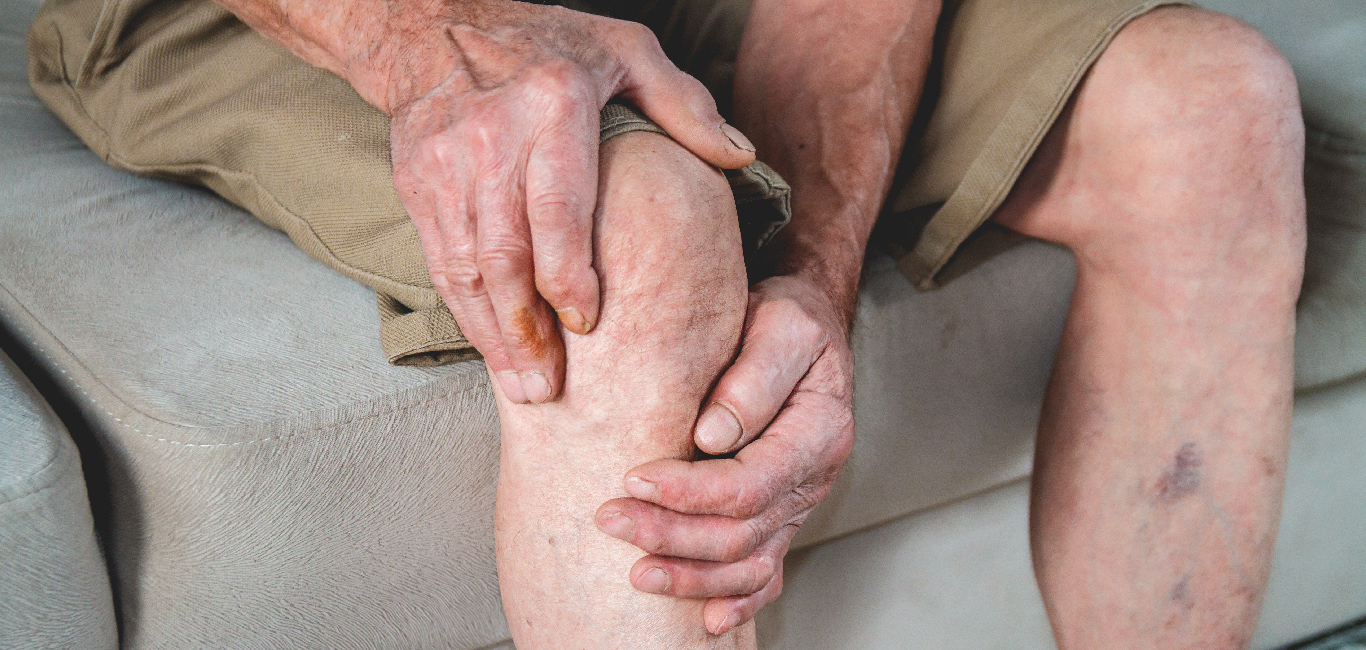
For 20 years, Gowri Nambiar lived with debilitating pain and discomfort in both her knee joints, which kept getting worse as the years went by. Diagnosed with osteoarthritis, she first had niggling pain and swelling in her right knee and then, gradually, the left knee also got affected. As the disease advanced, the joints stiffened and mobility became restricted — the agony was worst while getting up from a sitting position and lying down at night.
The 72-year-old tried different treatments including exercises, alternative therapy and medications. She got some relief but only for a limited period. When her joints started to bend, her doctor and family members suggested joint replacement surgery which was successful.
“At one point I was almost bedridden, the swelling and pain was so agonising; I would be in tears,” says the septuagenarian. “For some time, the Ayurvedic treatment I took gave me some relief but eventually the joints started bending, and mobility and balance became a problem. It has been six years since the surgery and I’m happy I can move around freely now.”
ALSO READ
Let elderly be at the top of their voice
Training your bladder
How to age happily
Osteoarthritis (OA) is a degenerative joint disease that is more common among the ageing population but can affect people of all ages. It happens because of the breaking down of articular cartilage within a joint. OA is a public health concern all over the world for the high healthcare costs and disability, mostly in the elderly. According to the Arthritis Foundation, OA is now widely known as a disease that affects every part of a joint — cartilage, bone, ligament and connective tissue that lines the joint capsule (synovium) — and leads to inflammation and change in bone shape.
According to the study ‘Prevalence Trends of Site-Specific Osteoarthritis From 1990 to 2019: Findings From the Global Burden of Disease Study 2019’ by Huibin Long et al published in the journal Arthritis and Rheumatology, globally the prevalence of OA increased by 113 per cent from 1990 to 2019. The researchers studied data from 204 countries and found that OA was more prevalent in developed countries. Obesity along with increasing population and aging were the main reasons for increase in OA numbers. Women were more likely to develop this condition compared to men.
Risk factors for osteoarthritis
- Age
- Excessive weight gain
- Damage to the joints due to injury or disease processes such as rheumatism
- Heredity
- Repeated stress on the joints
“Usually, elderly individuals start developing OA at around 50-70 years,” Dr Gokulraj Dhanarajan, head of orthopaedics at Fortis Hospital, Vadapalani, Chennai, who specialises in kinematic knee replacement and minimally invasive surgeries, told Happiest Health. “Younger people may get OA because of post-traumatic damage to the joints. The most common joint to be affected by OA is the knee but it can also develop in the hips, hands and neck. Age is a major risk factor for being diagnosed with this condition, but not all old people will get OA. Since it is a degenerative disease, the pain and disability worsen over time.”
Prevention of osteoarthritis
Taking certain proactive measures will help prevent or delay onset of the disease:
- Having an active and healthy lifestyle
- Getting plenty of exercise, especially aimed at strengthening the muscles around the joints. Regular walking, swimming and yoga are known to be beneficial
- Eating well-balanced meals that are rich in a combination of nutrients and avoiding junk food
- Avoiding excess weight gain since obesity is a major risk factor for OA
Treatment of osteoarthritis
To get an accurate diagnosis of osteoarthritis, doctors conduct a detailed examination of the affected joint and may order X-rays and magnetic resonance imaging (MRI) to confirm the disease. OA has no cure but can be managed effectively with a variety of treatment options.
“Initially, we start with conservative management of the condition,” says Dr Gokulraj. “This includes painkillers (short term); physiotherapy and exercises to strengthen the knee joints and nutraceuticals to regenerate the articular cartilage. We also advise patients to reduce excess weight as it helps decrease the pressure on the joints by 20-30 per cent. When the damage to the joints is in the initial stages, using interventional treatment such as hyaluronic acid and platelet-rich plasma helps in decreasing pain and inflammation. I encourage my patients to also try nature-based therapy. Surgery is always the last resort.”
Other treatments
- Natural therapy: Studies have shown that certain substances occurring in nature — such as turmeric (curcumin) and pepper — help in healing pain and inflammation caused by OA. Curcumin has anti-inflammatory and anti-oxidative properties while pepper helps in better absorption of turmeric. Capsules that have both these substances are available. Other Ayurveda and naturopathy-based therapies may give relief from pain but more studies need to be done to prove the same
- Viscosupplementation: This procedure is mostly used for knee joints and it involves injecting hyaluronic acid into the joint; this acts as a cushion and makes the joint supple, improving mobility
- Platelet-rich plasma (PRP): In this procedure, doctors will derive PRP from the patient’s own blood sample and inject it into the affected joint. The growth factors in the PRP help re-generate the tissues. As this is a relatively new procedure, more studies are needed to prove its efficacy. Studies have found that other non-surgical treatments such as bone marrow aspirate concentrate (BMAC) and micro-fragmented adipose tissue injections help relieve pain and swelling in OA
- Knee braces: An offloading knee brace is a device worn over the joint that helps shift the weight of the body from the affected part of the knee
- Surgery: There are different types of surgery that may be done to treat OA, based on which joint is affected and extent of damage. Most of them are done through the minimally invasive technique for quicker recovery. These include osteochondral autologous transfer surgery (OATS), osteotomy procedure and joint replacement surgery (for knee and hip).

















